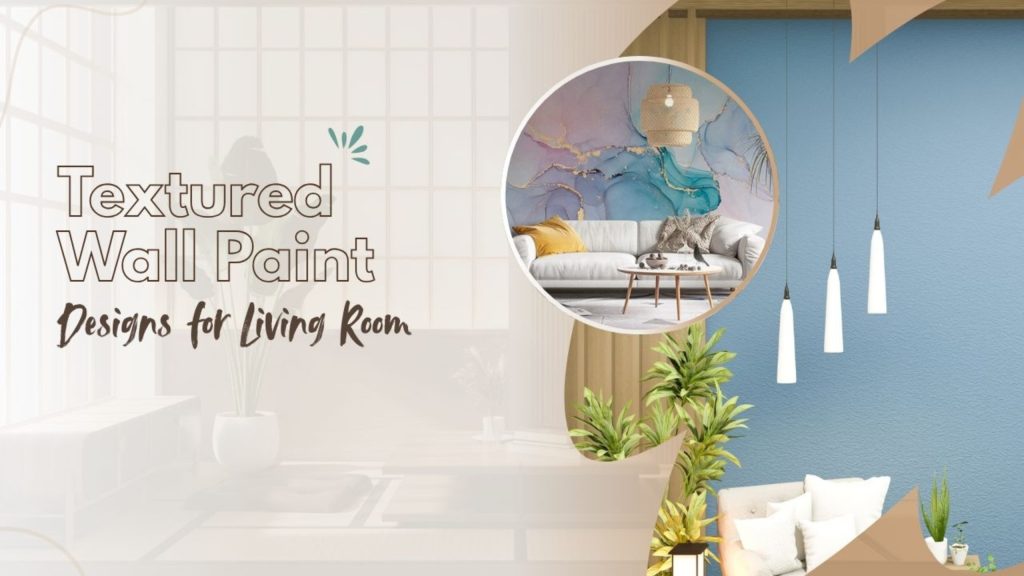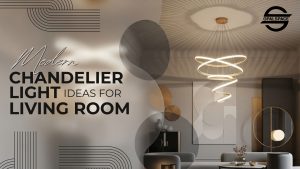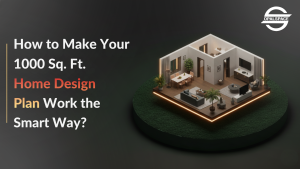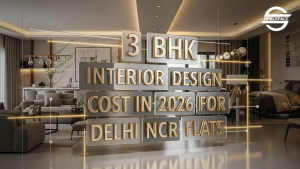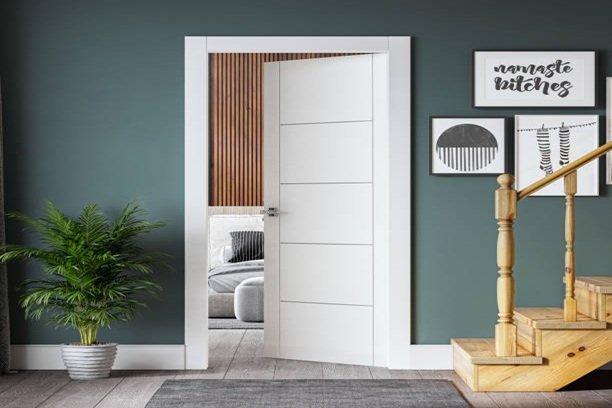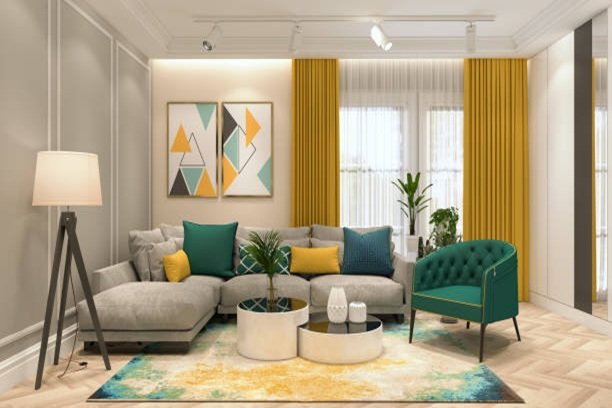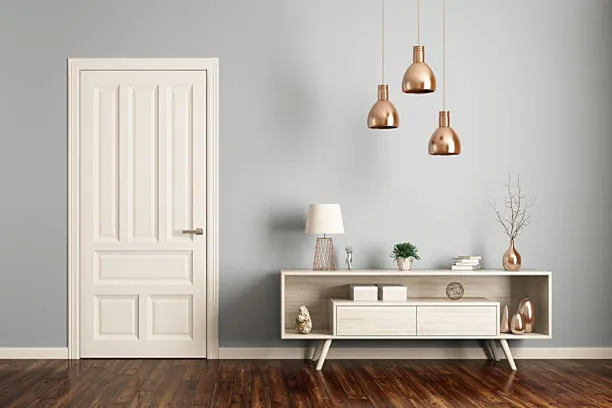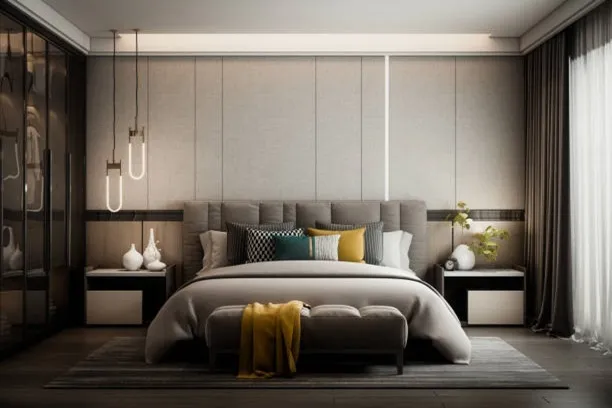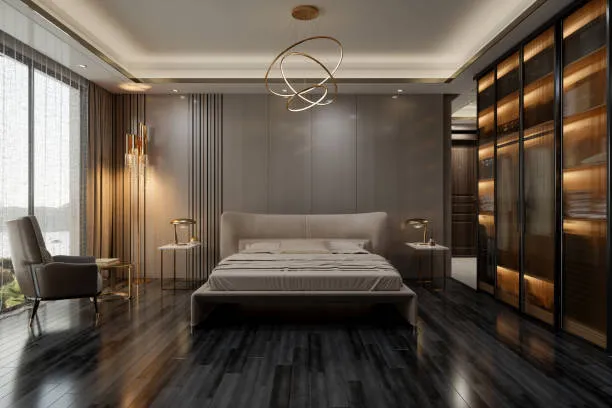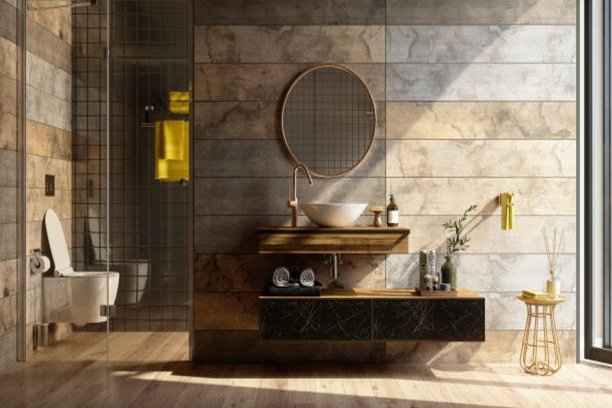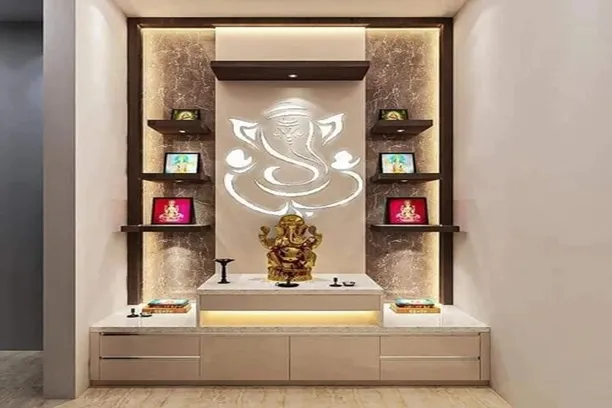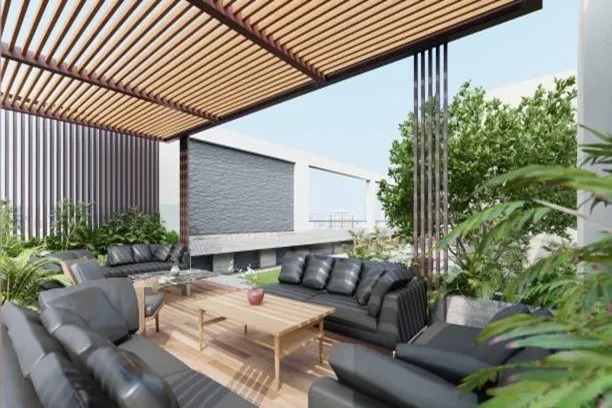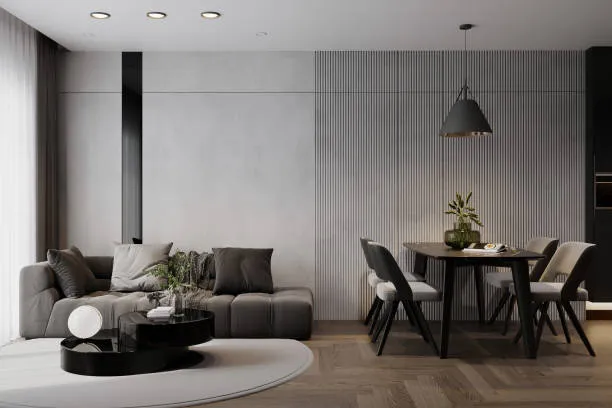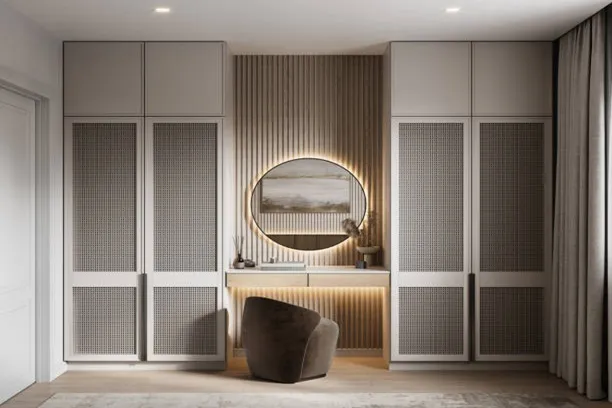Table of Contents
Your outside reflects your inside. When we feel our mental health syncing with our living room’s, mind you that it’s not just a random feeling. Psychologists say that clutter literally increases cortisol (the stress hormone). Yes, life is chaotic. But when you control your space your way, it kind of tricks your brain into feeling like everything’s manageable. That’s neuroscience backing this.
The way you keep your surroundings strongly impacts the state of your mind. And it doesn’t stop at just organising things. In fact, it includes the walls of your living room too. Colors, textures, and patterns, they all have a psychological impact. It doesn’t matter, whether with wall paint or wallpaper, altogether they make a huge difference in the overall look and feel of your home’s interior design.
Wall paint or wallpapers, both, have their own pros and cons. And the right choice depends on factors like durability, maintenance, and design preferences. Wall paint gives your walls a clean and simply aesthetic effect. You get the flexibility to switch up colors, textures or tones whenever you want. It’s also easier to apply and maintain, especially in spaces that require frequent touch-ups. Meanwhile, wallpaper has in it the capability to offer depth to a room with its rich patterns, textures, and intricate designs, something which paint might not always achieve. It works really well for accent walls or when you want to create a more luxurious feel in your interiors.
Ultimately, it boils down to your priorities. What matters most to you. If you prefer versatility and easy maintenance, paint will be a practical choice. But if you’re looking for a more unique and long-lasting design, wallpaper is worth considering. Some homeowners even mix both – using paint for most walls and wallpaper for a feature or accent wall to get the best of both creativity and practicality.
Why Should You Go for Textured Paint?
- Hides Wall Imperfections – Got uneven walls? Cracks? That one patch where your little cousin decided to ‘decorate’? Textured paint camouflages everything like magic.
- Adds Personality – From rustic brick finishes to silk-smooth patterns, there’s a texture for every mood.
- Low Maintenance – Unlike wallpapers, which may peel in humidity (hello, monsoon!), textured paint stays put for years.
- Endless Options – Venetian plaster, sandstone, metallic sheen – sounds fancy, right? But the best part? They actually look as good as they sound!
Textured Wall Paint Designs for Living Room
1. Popcorn Textured Wall Paint
- Popcorn texture offers a raised, bumpy surface that adds depth and dimension to plain walls. It will give your walls a distinctive finish.
- Its rough texture is perfect for covering minor wall flaws like cracks or uneven patches.
- It is often associated with vintage interiors, and hence it brings a nostalgic charm to modern spaces when styled right.
- It works well on feature walls rather than covering the entire room. Why? Because it has a bold texture.
- The uneven surface can collect dust, making regular cleaning a bit more time-consuming.

2. Brushed-On Textured Wall Paint
- Brushed texture is more refined than heavy plasters or stucco. This texture on your walls leaves behind visible strokes for the artsy feel.
- It’s perfect if you want a texture that’s noticeable.
- The best choice of shades are warm greys, soft olives, or clay shades. These shades really highlight the texture. Glossy paints tend to downplay the texture.
- It is on you to select your choice of brushed-on texture for customizable effect – linear strokes, crisscrosses, waves, etc. This is confirmed by pro painters and DIY guides.
- When a wall has texture, especially artistic brushwork, it acts as a design feature, meaning you can keep other elements simple.
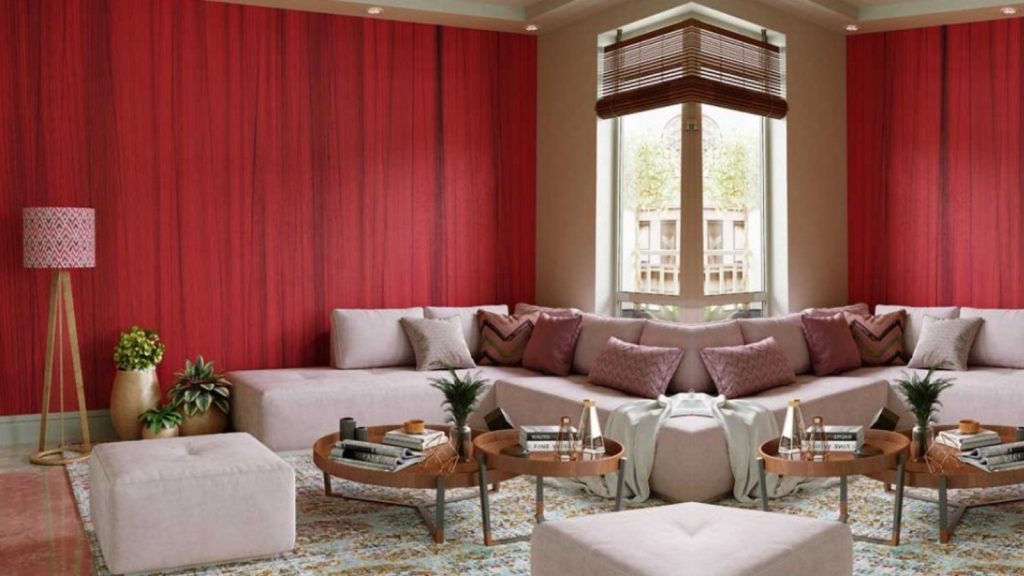
3. Knockdown Textured Wall Paint
- Knockdown texture starts with a splatter effect that’s flattened out to create a soft, stucco-like texture.
- Knockdown texture is created by spraying joint compound onto the wall and then “knocking it down” with a trowel or knife. This softens the peaks and gives it a flatter, more elegant finish than raw splatter.
- Just like popcorn and other heavy textures, knockdown camouflages imperfections, especially cracks, dents, and uneven drywall seams.
- Many home improvement experts suggest it’s a moderate-skill-level DIY. It requires a texture sprayer (or roller), drywall compound, and a knockdown knife, and good timing.
- Knockdown can be applied across entire rooms or just one statement wall depending on how much texture you want in the space. Both options are commonly seen in real interior projects.
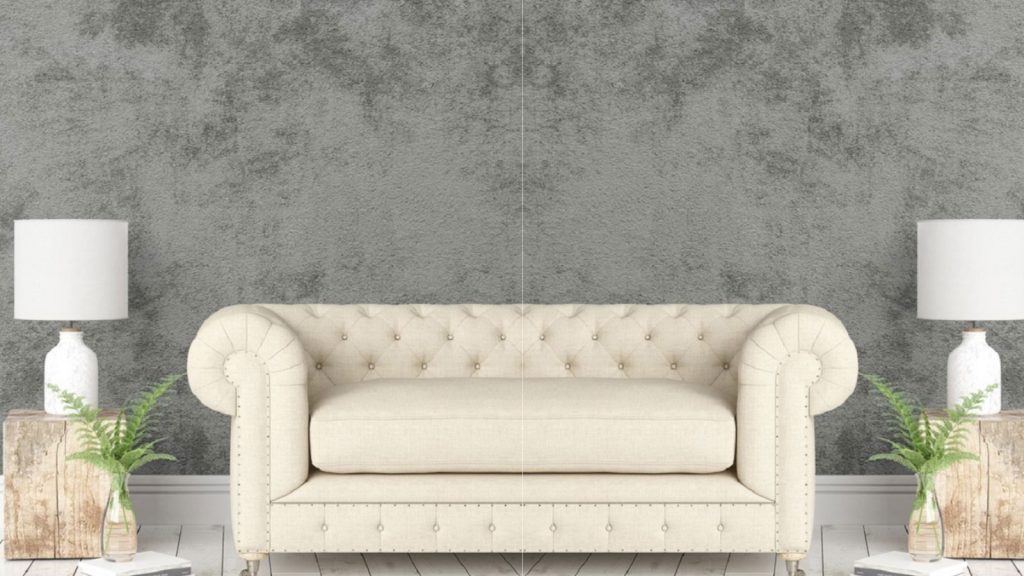
4. Orange Peel Textured Wall Paint
- It literally looks like orange skin, lightly dimpled. Its soft, dimpled finish offers a subtle texture that gives all the depth and element to your walls.
- Thanks to this texture’s balance of style and practicality, it is often recommended by professionals for high-traffic areas like the living room.
- It is achieved using a spray gun or roller, it delivers a polished, consistent texture without any need for complex techniques.
- The fine texture helps paint grip better, which can contribute to longer-lasting color and finish.
- No matter if you’re using latex, acrylic, or washable emulsions, the orange peel texture works well with most modern interior paints.
- Designers often choose it for its versatility — it works across modern, minimalist, and even transitional home styles.
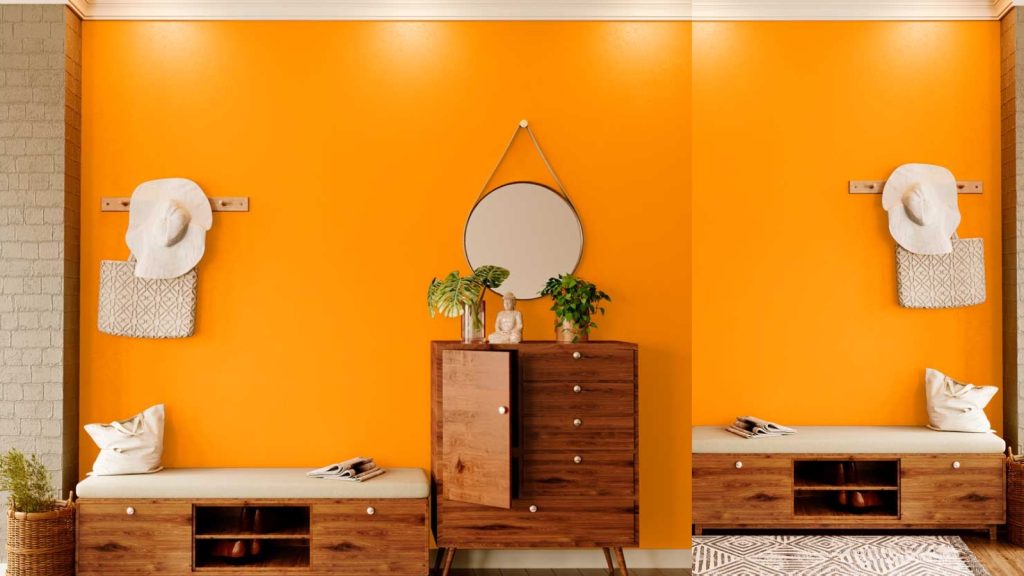
5. Combed Textured Wall Paint
- Combed texture is created using a combing tool. This texture brings in artistic elements that add unique structure to walls.
- Designers often use it to highlight specific areas like headboards or hallway walls due to its strong visual impact.
- You can go vertical, horizontal, or even wavy — the design is fully flexible to match your aesthetic.
- This texture gives dimension with finesse and keeps the surface elegant yet textured.
- If you’re going for a subtle matte or a rich glossy look, combed textures enhance both effortlessly.
- Experts often suggest it for modern homes and creative spaces where a bit of visual drama is welcome.
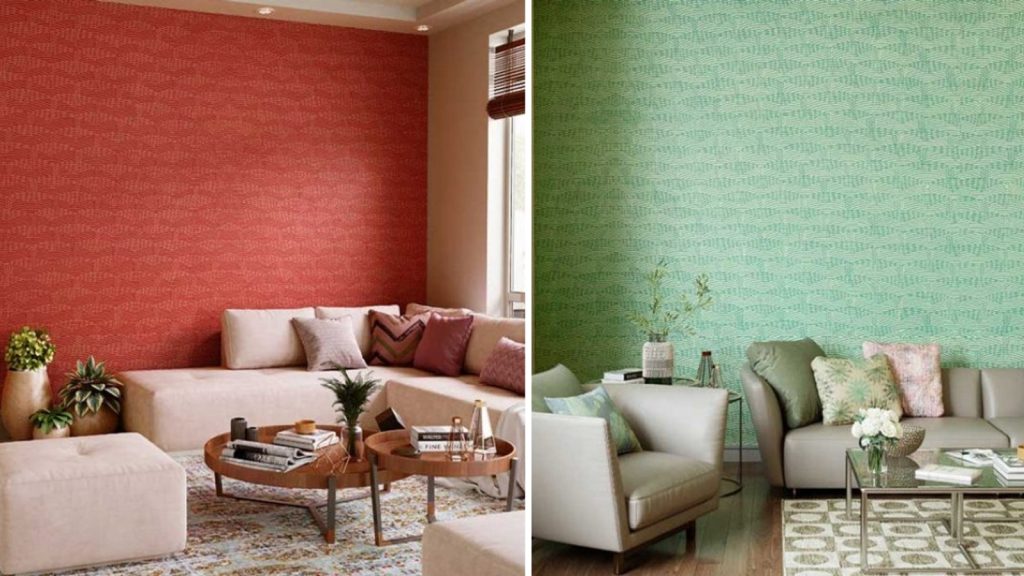
6. Suede Finish Textured Wall Paint
- Its unique effect of light and shadow brings out a subtle shimmer that shifts with viewing angles. It appears fancy and elegant.
- This paint creates a soft and velvety texture on walls. It gives your space a rich and luxurious feel.
- It’s a cherry on the cake that this texture is available in deep, earthy tones and jewel shades. Suede textures look especially stunning in bold, dramatic colors.
- Designers often use it in living rooms, lounges, and bedrooms where a warm, upscale ambiance is the goal.
- Though it appears richly layered, the finish remains soft and smooth that makes it both practical and premium.
- Interior professionals suggest suede finish for clients who want understated elegance with a hint of texture.
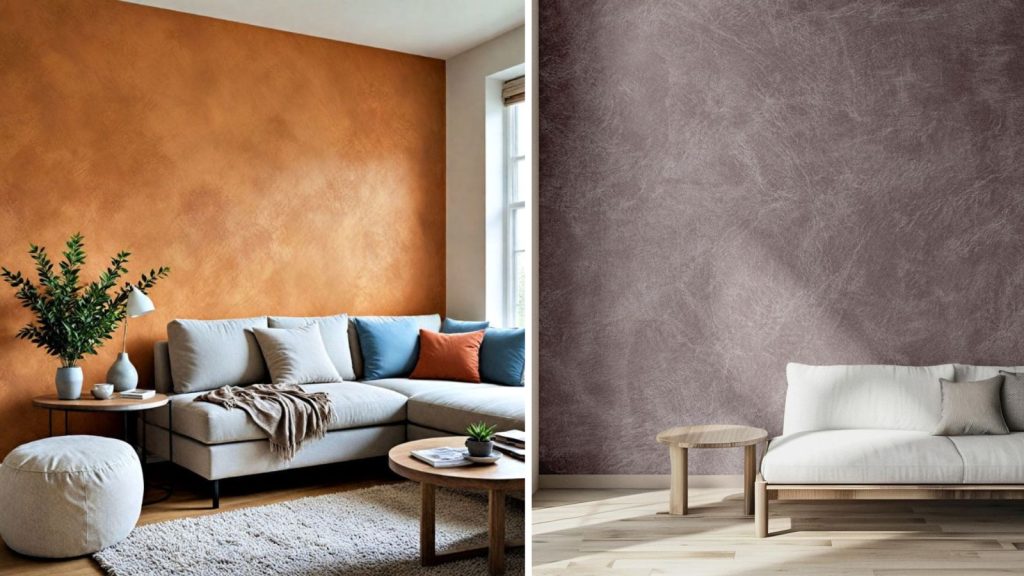
7. Venetian Plaster Paint
- Venetian plaster is known for its smooth, multi-tonal effect that mimics natural stone. It is an evergreen texture for your modern walls.
- Its lime-based composition lets your walls breathe, which makes it ideal for humid areas like kitchens and bathrooms.
- When it is applied properly, it forms a hard, protective layer that resists peeling, fading, and general wear.
- Soft matte to a glass-like sheen — it offers finish flexibility based on your room’s vibe and lighting.
- Thanks to its mineral base, it is low-VOC and naturally inhibits the growth of mold and bacteria.
- Interior experts often choose it for upscale homes, hotels, and showrooms for elegance and craftsmanship.
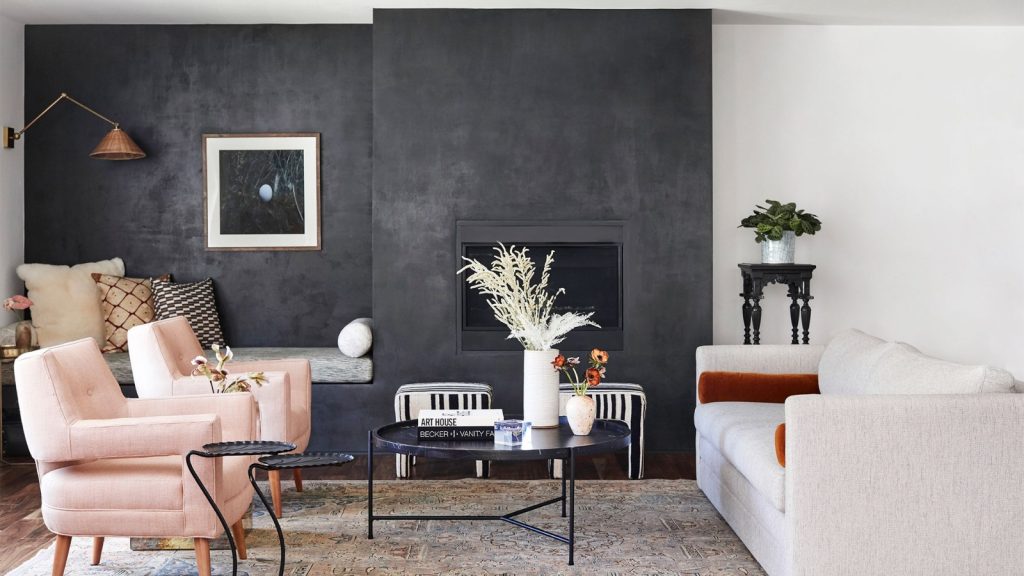
8. Marble Paint Texture Wall Paint for Living Room
- This paint technique creates natural-looking marble veins and textures on walls, and as a result, offers a luxurious, high-end finish.
- You get the visual richness of marble without the expense and maintenance of actual stone.
- Experts love it for its flexibility — you can go classic with whites and greys or bold with deeper tones and dramatic patterns.
- This fancy texture is often used behind TV units, in entryways, or living room backdrops to create an elegant, eye-catching statement.
- Though it appears multi-layered, the surface stays smooth. It gives you the beauty of depth without any rough texture.
- Interior designers use it in both minimal and opulent spaces where a marble aesthetic can elevate the overall ambiance.
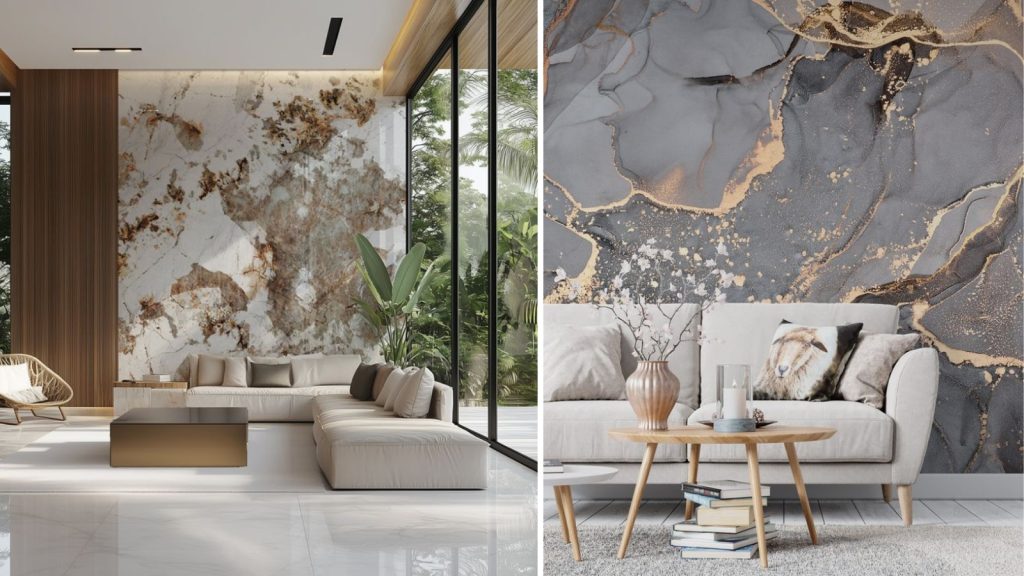
9. Metallic Textured Wall Paint for Living Room
- Metallic paints catch and reflect light beautifully, and give your walls a subtle shimmer and a high-end, polished look.
- Designers often use it in dining areas, behind headboards, or in entryways to create rich, impactful focal points.
- Right from golds and coppers to silvers and bronzes, you can choose shades that match both modern and classic interiors as per your interest.
- Thanks to the light-catching properties of metallic texture, it brings depth and dimension on the walls to make them alive.
- Experts recommend using it where there’s warm or indirect lighting. Because it enhances the metallic finish and sets the mood.
- Despite its rich look, metallic finishes are relatively low-maintenance and resistant to everyday wear and tear.
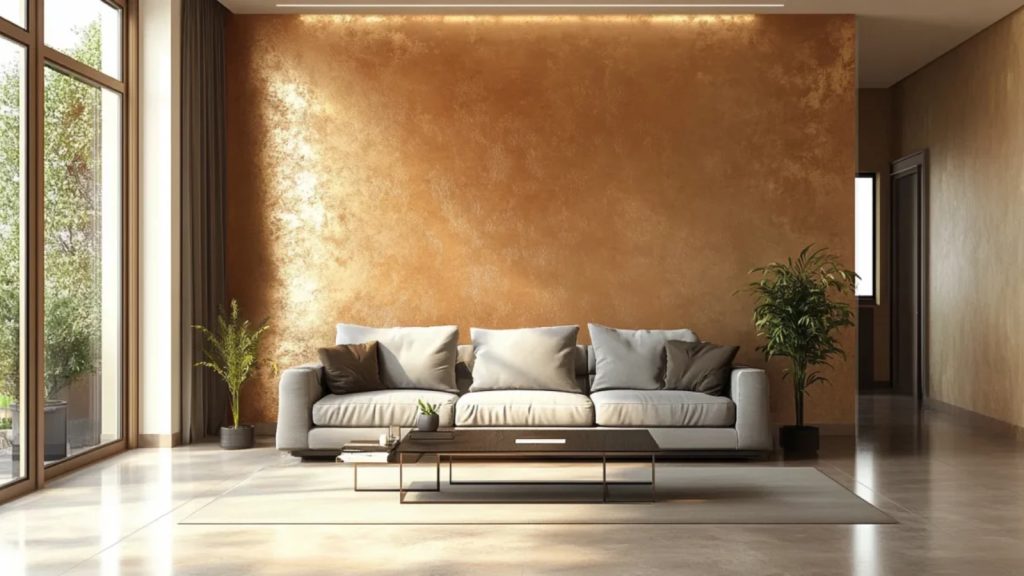
10. Sand Swirl Texture Wall Paint
- Sand swirl uses arched, overlapping brush strokes to form subtle curves. This adds a graceful and handcrafted look.
- The fine sand when mixed in the paint, it adds gentle texture without making the surface feel too rough or busy.
- Professionals often apply this finish in open spaces where its flowing design can shine, and still not be overwhelming.
- You can want tight, detailed swirls or broad, relaxed arcs. And this style can be tailored to fit your interior interest very well.
- The added sand improves paint durability which helps in making it a long-lasting choice for both residential and commercial interiors.
- Experts recommend pairing this texture with soft beiges, off-whites, or taupes for a warm and calming effect.

What is the cost of texture paint per square foot?
General Price Range
Type Matters
Labour and Prep Influence Costs
Premium Finishes Come at a Price
Area Size Affects Pricing
Regional Variations Exist
How Can We Help You?
So if your walls are still sitting plain and undecided, maybe it’s time to give them a fresh identity . Get in touch with us today, your walls are waiting.

